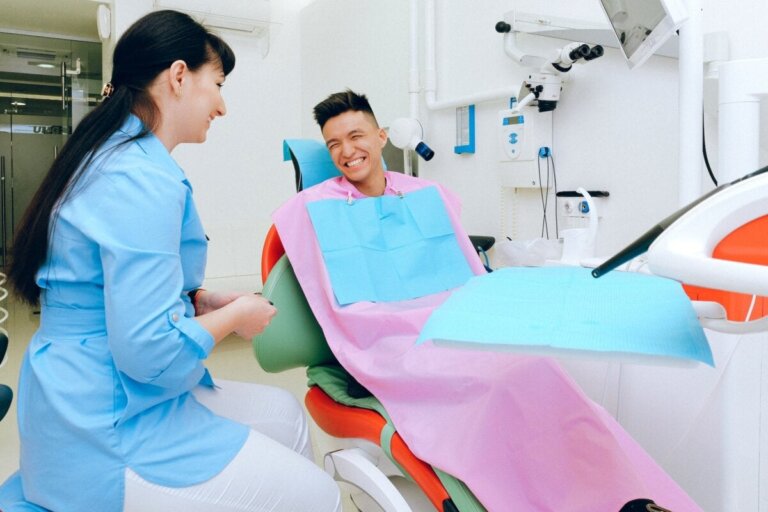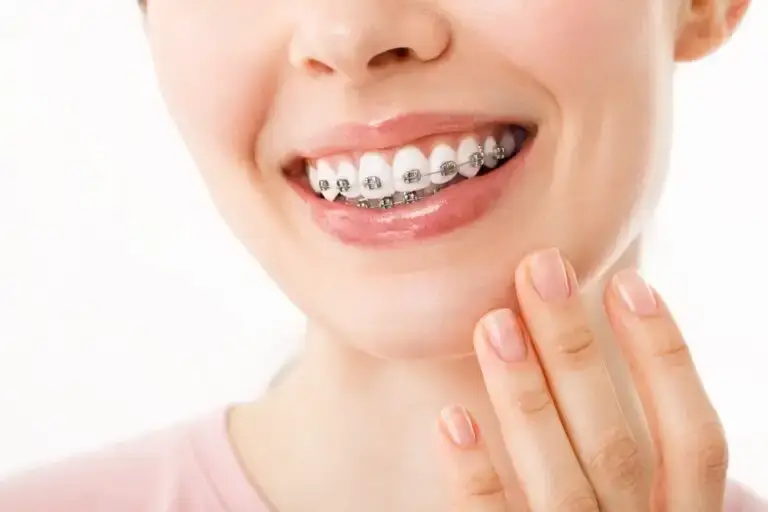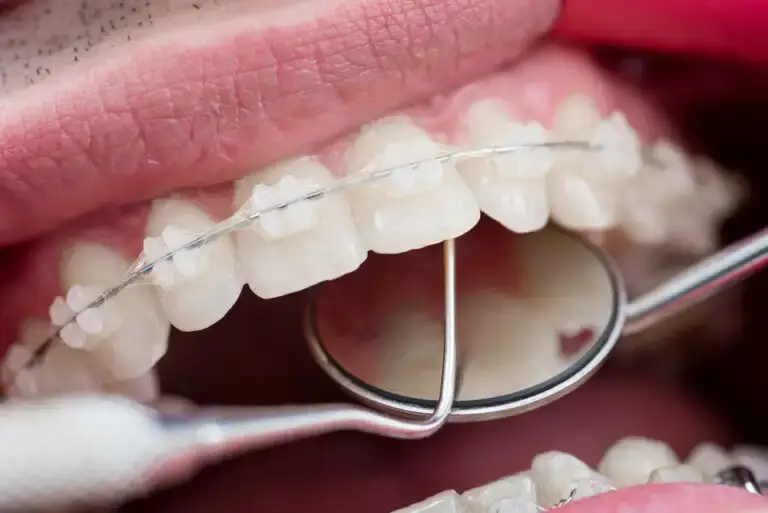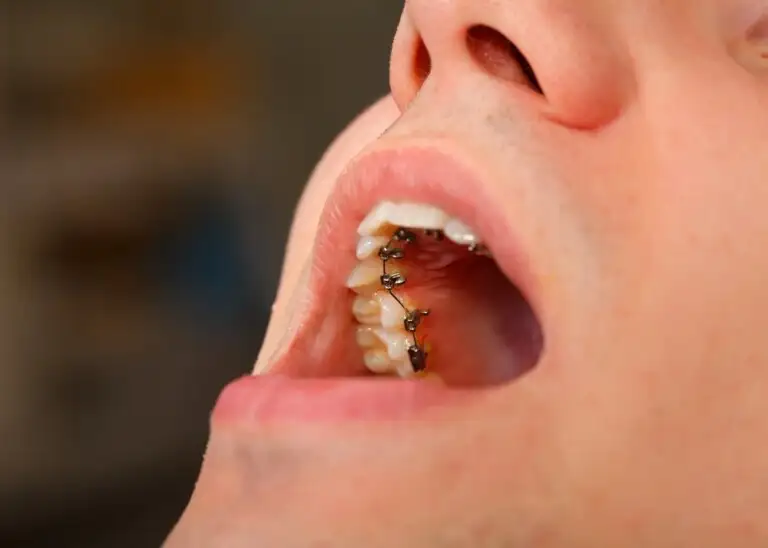Orthodontics During Adolescence: What You Should Consider


Written and verified by the dentist Vanesa Evangelina Buffa
Orthodontics during adolescence has many advantages. This period is ideal for correcting occlusion problems and aligning the bite, taking advantage of the presence of the permanent teeth in the mouth and the growth of the maxillary bones.
In addition, at this stage of personal and social development, improving the appearance of the smile becomes even more relevant. If you have questions about the best age to start treatment, the need for treatment, or the most appropriate types of braces, keep reading for more information.
What’s the best age for orthodontics?
Although it’s ideal to start orthodontic treatment during childhood, adolescence is also an opportune time. An article published in the Indian Journal of Forensic Medicine & Toxicology suggests that the most convenient age to perform this type of intervention is between 8 and 14 years old.
In this period, dental replacement takes place, the maxillofacial bones grow, and the eruption of the definitive teeth ends. These conditions allow treatments to be shorter and simpler.
In youth, it’s possible to complete the corrective phase of an approach that was already initiated during childhood or to start the bite alignment from scratch. The best time to place braces in adolescents varies from case to case. In general, it’s recommended when the permanent dentition has completely erupted, which happens around the age of 12.
How do you know if adolescents need orthodontics?
The need for orthodontic treatment in adolescents is determined by the orthodontist in the dental office. To do this, the orthodontist performs multiple studies including photographs, x-rays, scans, and molds of the mouth. These tests help diagnose the occlusal problem and design a personalized treatment plan.
However, there are some signs that may make you suspect that your child needs braces. Here are a few.
- One or more teeth are crooked, gapped, or crowded.
- The child can’t close their mouth completely.
- The jaw is disproportionate or asymmetrical.
- The child has trouble biting, chewing, or pronouncing some phonemes.
- They breathe through the mouth or snore when sleeping.
- Their face isn’t harmonious.
- They lost their baby teeth early or the permanent ones took a long time to come in.
If you observe any of these signs, it’s important that you consult an orthodontist for an accurate evaluation. Also, even if there’s no apparent alteration, visit the orthodontist once a year. The specialist will be able to follow the development of your child’s mouth and take early action when necessary.
Aesthetics also matter
There’s an emotional and social aspect to an unattractive smile. Young people may feel embarrassed by the appearance of their teeth and, therefore, wish to improve them by wearing braces.
A qualitative study published in the American Journal of Orthodontics and Dentofacial Orthopedics investigated how adolescent orthodontic patients perceive their malocclusion and their motivations and expectations regarding treatment.
The results showed that the participants focused their attention on aesthetically bothersome dentofacial features, which they hoped to correct with braces.
Also, a descriptive study published in the Revista Archivo Médico de Camagüey, which analyzed the impact of dentomaxillofacial anomalies in children and adolescents, explains that these conditions have a significant impact on their lives, especially from the psychosocial perspective.
What’s the best type of orthodontics for adolescents?
Orthodontic treatments use different appliances to mobilize the jaws or teeth. In this way, they make the structures of the mouth relate in a harmonious and balanced way, perform their functions normally, and look aesthetically pleasing.
There are different types of braces available for adolescents, and the choice of treatment will depend on the patient’s individual needs, preferences, costs, and the orthodontist’s recommendations.
Metal braces
Traditional metal braces are a popular, inexpensive, and effective option for correcting bite problems. However, if the adolescent is concerned about the aesthetic appearance of their mouth during treatment, they’re not the best option. The metal is very noticeable and can cause embarrassment for some young people.

Ceramic or sapphire brackets
Another more aesthetic alternative is ceramic or sapphire brackets. The former have the same color as the teeth and aren’t as costly. However, they can become pigmented with use. The latter are transparent and almost imperceptible to the naked eye, but are quite expensive.

Lingual brackets
Lingual brackets are the most imperceptible option, as the attachments are cemented to the inside of the teeth. This type of braces is custom designed for each patient, so the cost is very high.

Invisalign System
The Invisalign system is one of the new orthodontic trends among teenagers. This type of braces uses transparent removable splints that are custom-made for each patient.
They’re replaced from time to time to produce the desired dental movements. The teenager can put the braces on and take them off by themself, which makes it easier to eat and clean their mouth.

What should you know before your child wears braces?
If your child is about to start wearing braces or is just beginning to correct their bite, there are several things to keep in mind. It’s important for young people to be committed to orthodontic treatment so that it fulfills its purposes.
- In the case of removable braces, they need to be worn for more than 22 hours a day.
- Your child may experience slight pain or discomfort during orthodontics. It has been suggested that the first three months of treatment may be a little more critical because of the impact on the teenager’s quality of life.
- Wires and brackets can injure the soft tissues of the mouth. Orthodontic wax should be used on sharp edges.
- Oral hygiene should be thorough. Braces, especially those with brackets, increase the risk of developing gingivitis and cavities.
- When wearing braces, hard and sticky foods should be avoided, as they can break or dislodge the appliance.
- Orthodontic treatment may require the removal of some teeth.
- The duration of orthodontic treatment for adolescents varies depending on the complexity of the case and the individual patient’s response. On average, the process usually lasts between 1 and 3 years.
- It’s important to follow the orthodontist’s instructions and attend follow-up appointments to ensure that treatment is progressing.
- When the braces are removed, it’ll be necessary to use dental retainers to sustain the results achieved over time.
An early solution
Orthodontics during adolescence is an effective tool for correcting malocclusions, aligning teeth, and improving the aesthetics and functionality of the smile at an early age. Taking advantage of bone growth and the presence of permanent teeth in the mouth make this stage an ideal time to act.
Adolescents have different alternatives to solve their bite problems and feel good about the treatment. If they don’t have conflicts with the aesthetic appearance of brackets and wires on their teeth, conventional metal braces are a good alternative.
On the other hand, if they prefer more discreet options, they can choose between ceramic, sapphire, or lingual brackets. They can also opt for invisible aligners.
With patience and commitment, the results will be worth it. Don’t hesitate to visit your child’s orthodontist for an accurate evaluation and a personalized treatment plan.
Orthodontics during adolescence has many advantages. This period is ideal for correcting occlusion problems and aligning the bite, taking advantage of the presence of the permanent teeth in the mouth and the growth of the maxillary bones.
In addition, at this stage of personal and social development, improving the appearance of the smile becomes even more relevant. If you have questions about the best age to start treatment, the need for treatment, or the most appropriate types of braces, keep reading for more information.
What’s the best age for orthodontics?
Although it’s ideal to start orthodontic treatment during childhood, adolescence is also an opportune time. An article published in the Indian Journal of Forensic Medicine & Toxicology suggests that the most convenient age to perform this type of intervention is between 8 and 14 years old.
In this period, dental replacement takes place, the maxillofacial bones grow, and the eruption of the definitive teeth ends. These conditions allow treatments to be shorter and simpler.
In youth, it’s possible to complete the corrective phase of an approach that was already initiated during childhood or to start the bite alignment from scratch. The best time to place braces in adolescents varies from case to case. In general, it’s recommended when the permanent dentition has completely erupted, which happens around the age of 12.
How do you know if adolescents need orthodontics?
The need for orthodontic treatment in adolescents is determined by the orthodontist in the dental office. To do this, the orthodontist performs multiple studies including photographs, x-rays, scans, and molds of the mouth. These tests help diagnose the occlusal problem and design a personalized treatment plan.
However, there are some signs that may make you suspect that your child needs braces. Here are a few.
- One or more teeth are crooked, gapped, or crowded.
- The child can’t close their mouth completely.
- The jaw is disproportionate or asymmetrical.
- The child has trouble biting, chewing, or pronouncing some phonemes.
- They breathe through the mouth or snore when sleeping.
- Their face isn’t harmonious.
- They lost their baby teeth early or the permanent ones took a long time to come in.
If you observe any of these signs, it’s important that you consult an orthodontist for an accurate evaluation. Also, even if there’s no apparent alteration, visit the orthodontist once a year. The specialist will be able to follow the development of your child’s mouth and take early action when necessary.
Aesthetics also matter
There’s an emotional and social aspect to an unattractive smile. Young people may feel embarrassed by the appearance of their teeth and, therefore, wish to improve them by wearing braces.
A qualitative study published in the American Journal of Orthodontics and Dentofacial Orthopedics investigated how adolescent orthodontic patients perceive their malocclusion and their motivations and expectations regarding treatment.
The results showed that the participants focused their attention on aesthetically bothersome dentofacial features, which they hoped to correct with braces.
Also, a descriptive study published in the Revista Archivo Médico de Camagüey, which analyzed the impact of dentomaxillofacial anomalies in children and adolescents, explains that these conditions have a significant impact on their lives, especially from the psychosocial perspective.
What’s the best type of orthodontics for adolescents?
Orthodontic treatments use different appliances to mobilize the jaws or teeth. In this way, they make the structures of the mouth relate in a harmonious and balanced way, perform their functions normally, and look aesthetically pleasing.
There are different types of braces available for adolescents, and the choice of treatment will depend on the patient’s individual needs, preferences, costs, and the orthodontist’s recommendations.
Metal braces
Traditional metal braces are a popular, inexpensive, and effective option for correcting bite problems. However, if the adolescent is concerned about the aesthetic appearance of their mouth during treatment, they’re not the best option. The metal is very noticeable and can cause embarrassment for some young people.

Ceramic or sapphire brackets
Another more aesthetic alternative is ceramic or sapphire brackets. The former have the same color as the teeth and aren’t as costly. However, they can become pigmented with use. The latter are transparent and almost imperceptible to the naked eye, but are quite expensive.

Lingual brackets
Lingual brackets are the most imperceptible option, as the attachments are cemented to the inside of the teeth. This type of braces is custom designed for each patient, so the cost is very high.

Invisalign System
The Invisalign system is one of the new orthodontic trends among teenagers. This type of braces uses transparent removable splints that are custom-made for each patient.
They’re replaced from time to time to produce the desired dental movements. The teenager can put the braces on and take them off by themself, which makes it easier to eat and clean their mouth.

What should you know before your child wears braces?
If your child is about to start wearing braces or is just beginning to correct their bite, there are several things to keep in mind. It’s important for young people to be committed to orthodontic treatment so that it fulfills its purposes.
- In the case of removable braces, they need to be worn for more than 22 hours a day.
- Your child may experience slight pain or discomfort during orthodontics. It has been suggested that the first three months of treatment may be a little more critical because of the impact on the teenager’s quality of life.
- Wires and brackets can injure the soft tissues of the mouth. Orthodontic wax should be used on sharp edges.
- Oral hygiene should be thorough. Braces, especially those with brackets, increase the risk of developing gingivitis and cavities.
- When wearing braces, hard and sticky foods should be avoided, as they can break or dislodge the appliance.
- Orthodontic treatment may require the removal of some teeth.
- The duration of orthodontic treatment for adolescents varies depending on the complexity of the case and the individual patient’s response. On average, the process usually lasts between 1 and 3 years.
- It’s important to follow the orthodontist’s instructions and attend follow-up appointments to ensure that treatment is progressing.
- When the braces are removed, it’ll be necessary to use dental retainers to sustain the results achieved over time.
An early solution
Orthodontics during adolescence is an effective tool for correcting malocclusions, aligning teeth, and improving the aesthetics and functionality of the smile at an early age. Taking advantage of bone growth and the presence of permanent teeth in the mouth make this stage an ideal time to act.
Adolescents have different alternatives to solve their bite problems and feel good about the treatment. If they don’t have conflicts with the aesthetic appearance of brackets and wires on their teeth, conventional metal braces are a good alternative.
On the other hand, if they prefer more discreet options, they can choose between ceramic, sapphire, or lingual brackets. They can also opt for invisible aligners.
With patience and commitment, the results will be worth it. Don’t hesitate to visit your child’s orthodontist for an accurate evaluation and a personalized treatment plan.
All cited sources were thoroughly reviewed by our team to ensure their quality, reliability, currency, and validity. The bibliography of this article was considered reliable and of academic or scientific accuracy.
- Ali, S. J., Sasanka, L. K., Ramanadhan, V., Ganapathy, D. (2020). Orthodontics and Smile Correction in Teenagers-A Survey. Indian Journal of Forensic Medicine & Toxicology, 14(4), 5486–5493. https://medicopublication.com/index.php/ijfmt/article/view/12477
- Domenech La Rosa, L., García Peláez, S. Y., Colunga Santos, S., de los Ríos Marí, R., & Soler Herrera, M. (2020). Severidad, estética e impacto psicosocial de anomalías dentomaxilofaciales en niños y adolescentes. Revista Archivo Médico de Camagüey, 24(6). http://scielo.sld.cu/scielo.php?script=sci_arttext&pid=S1025-02552020000600009
- Moreira Campuzano, T., Mazzini Torres, M. F., & Melgar Rosales, A. (2020). Revisión sistemática sobre los tipos de tratamientos relacionados con la Ortodoncia Interceptiva en jóvenes y niños. Revista Científica Especialidades Odontológicas UG, 3(1), 127-131. https://revistas.ug.edu.ec/index.php/eoug/article/view/310
- Prado, L. H., Previato, K., Delgado, R. Z. R., Nelson Filho, P., Segato, R. A. B., Matsumoto, M. A. N., & Feres, M. F. N. (2022). Adolescents’ perception of malocclusion, their motivations, and expectations concerning the orthodontic treatment. Is it all about attractiveness? A qualitative study. American Journal of Orthodontics and Dentofacial Orthopedics, 161(4), e345-e352. https://www.sciencedirect.com/science/article/abs/pii/S0889540621008088
- Vidigal, M. T. C., Mesquita, C. M., de Oliveira, M. N., de Andrade Vieira, W., Blumenberg, C., Nascimento, G. G., Pithon, M. M., & Paranhos, L. R. (2022). Impacts of using orthodontic appliances on the quality of life of children and adolescents: systematic review and meta-analysis. European journal of orthodontics, 44(4), 359–368. https://academic.oup.com/ejo/article-abstract/44/4/359/6535744?login=false
This text is provided for informational purposes only and does not replace consultation with a professional. If in doubt, consult your specialist.








